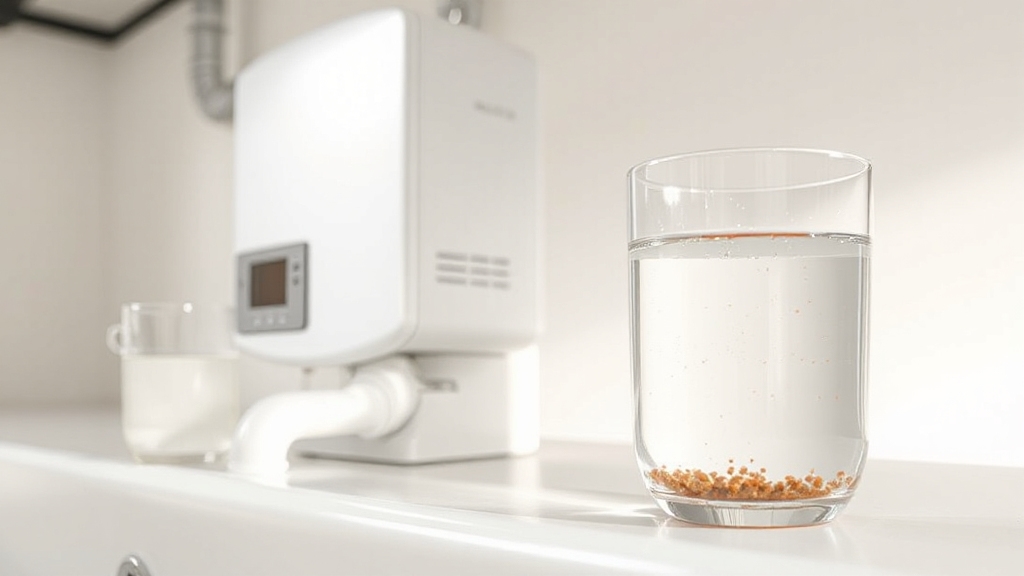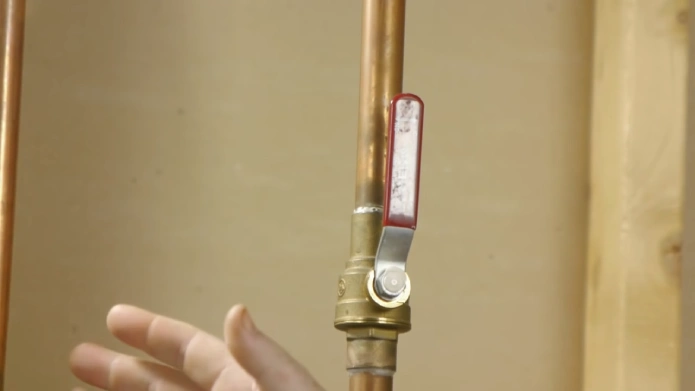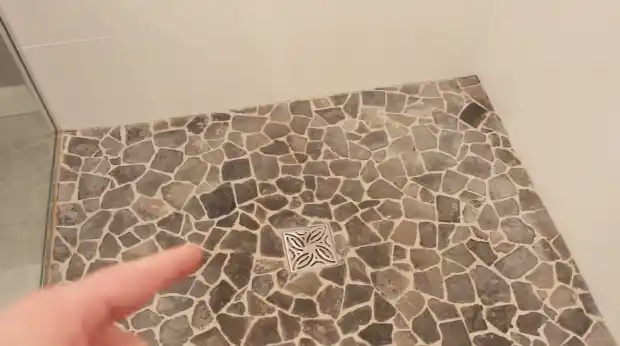Last Updated on July 26, 2025
You can use water softeners to remove low levels of dissolved ferrous iron by exchanging sodium ions. However, their effectiveness drops sharply above 1 ppm iron, and they don’t tackle ferric or precipitated iron forms well.
If your water contains visible iron stains or higher concentrations, relying solely on a softener can lead to resin fouling and frequent maintenance. For a thorough understanding of iron removal options and challenges, there’s more to explore beyond basic softening.
Key Takeaways
- Water softeners remove dissolved ferrous iron by ion exchange, effective up to about 1 ppm concentration in low pH water.
- They cannot effectively remove ferric (oxidized) iron or iron particles that precipitate in water.
- High iron levels cause resin fouling, reducing softener efficiency and increasing maintenance needs.
- Iron bacteria and organic iron compounds bypass softener filtration, leading to operational challenges.
- For iron above 1 ppm, specialized filtration or oxidation systems are recommended over water softeners.
How Water Softeners Work to Remove Iron?
Although water softeners are primarily designed to remove hardness ions like calcium and magnesium, they can also effectively eliminate ferrous iron through an ion exchange process. In this process, resin beads exchange sodium ions for ferrous iron ions dissolved in the water.
Ferrous iron has a moderate affinity for resin, higher than magnesium but lower than calcium, allowing softeners to target it efficiently when water is clear and pH is below 7. The water flow rate influences this removal efficiency, as slower flow enhances ion exchange.
Water softeners are particularly effective for ferrous iron when levels are up to 10 mg/L. Proper maintenance and monitoring of the softener system are crucial to sustain water quality and iron removal performance.
However, only soluble ferrous iron is removed; precipitated or oxidized iron forms are less effectively captured. During regeneration, the resin releases ferrous iron and hardness ions, maintaining the softener’s capacity for ongoing iron removal.
Limitations of Water Softeners in Iron Removal
Water softeners effectively remove soluble ferrous iron through ion exchange, but their capabilities have clear boundaries you should consider. They struggle with ferric iron, which precipitates and passes through resin untreated, especially when water pH exceeds 7.
Organic iron compounds also bypass softeners, reducing their effectiveness. Proper maintenance and timely disassembly of the softener components can help mitigate some of these limitations by addressing resin fouling and component wear through easy procedures.
Standard systems handle iron concentrations up to about 1 ppm; beyond this, performance declines sharply, and resin fouling accelerates. Accumulated ferric iron forms sticky deposits on resin beads, clogging pores and impairing hardness removal.
Heavy bacterial growth can clog pipes or produce “slugs” of iron-laden water, creating operational challenges for softeners due to iron bacteria. Softening alone won’t address particulate iron or stains from trace iron below 0.3 ppm.
For all-encompassing iron control, you’ll need supplemental filtration or alternative treatments, as softeners neither filter nor fully eliminate all iron forms and can suffer operational setbacks in iron-rich conditions.
Maintenance Challenges With Iron in Water Softeners
When iron accumulates on resin beds, it forms rust particles that stick stubbornly to the beads, reducing your softener’s ability to remove hardness and iron effectively. Standard regeneration cycles can’t eliminate all iron deposits, so you need specialized iron removal cleaners.
Without proper maintenance, resin beads clog, reducing capacity and causing orange stains and potential equipment damage. Before beginning any maintenance, always remember to unplug the sump pump to ensure safety and prevent electrical hazards.
| Maintenance Aspect | Challenge/Requirement |
|---|---|
| Iron accumulation | Rust particles coat resin beads |
| Cleaning necessity | Use phosphoric acid or Rust Out cleaners |
| Regeneration frequency | Multiple cycles needed for heavy iron |
| Equipment risks | Acids can damage injectors and seals |
| Inspection & repair | Regular seal checks and part replacements needed |
Alternatives for Removing High Levels of Iron
If you’re dealing with high iron concentrations that overwhelm standard water softeners, several advanced treatment alternatives can effectively reduce iron levels.
Hydrogen peroxide oxidation combined with catalytic carbon filtration uses peroxide to oxidize soluble iron, while carbon catalyzes and filters precipitates, handling iron levels above 20 ppm. This method is particularly useful when the iron is present in ferrous form, which is initially clear but oxidizes to ferric iron after standing.
Integrating a chlorine injection system can enhance the oxidation process and improve overall treatment efficiency. Chlorine-based oxidation filtration oxidizes ferrous iron to ferric oxides, filtered via granular activated carbon, ideal for 5–10 ppm iron with added disinfection benefits.
Manganese greensand filters utilize manganese dioxide-coated sand to oxidize and filter iron up to 15 mg/L, requiring periodic potassium permanganate regeneration. These filters are also effective against iron bacteria, which can cause slime and deposits in wells.
Air injection systems oxidize iron naturally with air bubbles, offering low-cost operation but limited efficacy at very high iron levels. Ozone injection rapidly oxidizes iron and other contaminants, though it demands higher installation costs and skilled maintenance.
Because iron from water is often hard to absorb, treatment primarily focuses on aesthetic and operational concerns rather than health risks.
When Water Softeners Are Not Suitable for Iron Removal?
Standard water softeners can handle only limited iron concentrations, typically up to 1 ppm, beyond which their effectiveness drops markedly. When iron levels considerably exceed this threshold, softeners become unsuitable due to resin fouling and reduced ion exchange efficiency.
Additionally, if your water contains ferric (oxidized, rusty) iron, softeners won’t remove it effectively since they target soluble ferrous iron. Low hardness waters with moderate to high iron also cause resin clogging, impairing performance. This is because softeners are generally more effective in hard water conditions, where calcium and magnesium ions dominate.
High pH water (above 7) further diminishes iron removal, necessitating iron-specific filtration methods instead. In cases with visible staining or elevated manganese, relying solely on a softener leads to inadequate treatment and potential equipment damage.
Frequently Asked Questions
Can Water Softeners Remove Manganese Along With Iron?
You can remove manganese with water softeners, but their effectiveness depends on conditions. Softener resin works best when manganese is dissolved, TDS is under 500 ppm, and pH stays below 8 to avoid precipitation.
Regular regeneration and high salt dosage prevent resin fouling. While softeners handle lower manganese levels well, higher concentrations or hard water may require specialized filters or oxidation treatments for better results.
How Does the Sodium Content in Softened Water Affect Taste?
You’ll find that softened water typically contains about 12.5 mg of sodium per 8-ounce glass, which is minimal compared to daily intake limits. This low sodium level rarely causes a salty taste, but it can make water taste “flat” because calcium and magnesium minerals, which add body, are replaced.
If you notice bitterness or saltiness, it might indicate high sodium from very hard water or system issues requiring maintenance or alternative salts like potassium chloride.
Are There Health Concerns With Drinking Softened Water Containing Iron?
You won’t face direct health risks from drinking softened water containing residual iron, as iron itself isn’t harmful at typical levels. However, softened water replaces calcium and magnesium with sodium or potassium, reducing beneficial mineral intake that contributes 5-20% of your daily needs.
If you’re mineral-deficient or on a sodium-restricted diet, this could matter. Always consider your overall mineral consumption and consult a professional if you have specific health concerns.
Can Water Softeners Handle Sudden Iron Level Spikes Effectively?
Imagine your water softener as a gatekeeper facing a sudden iron flood. It can manage moderate iron spikes, especially if the iron is ferrous and levels stay under about 10 mg/L.
However, during abrupt surges, iron particles clog the resin bed rapidly, reducing efficiency and risking breakthrough. You’ll need frequent regeneration, possible resin replacement, and supplemental treatments to maintain performance when iron spikes overwhelm the system.
What Is the Typical Lifespan of Resin Beads in Iron-Rich Water?
In iron-rich water, resin beads typically last between 5 to 10 years, shorter than the 10 to 15 years expected under ideal conditions. Iron causes clumping and fouling, which accelerates resin wear.
To maximize lifespan, you should use high-quality resin, perform regular maintenance, and consider a separate iron filtration system. Proper system sizing and consistent water quality monitoring also help you extend resin durability despite iron presence.
Going Beyond Softeners: Smarter Solutions for Iron-Rich Water
Think of your water softener as a gatekeeper—it can handle small amounts of iron, but it’s not built to clear heavy iron loads. While it exchanges hardness minerals effectively, iron can clog and damage the system, leading to frequent maintenance.
For high iron levels, you’ll want to explore specialized filtration technologies designed specifically for iron removal. Knowing these limits helps you safeguard your water system and ensures clean, iron-free water every time.



